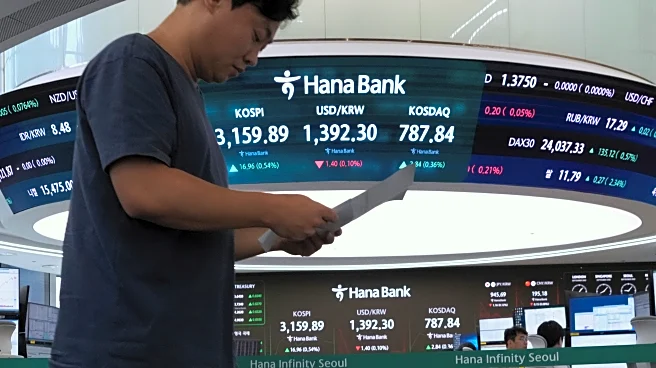What's Happening?
The United States Department of Agriculture (USDA) has revised its quarterly trade outlook, reducing the projected farm trade deficit for fiscal year 2025 to $47 billion, down from $49.5 billion in June. This adjustment comes as soybean exports are expected to decline significantly due to weakening demand from China. The USDA anticipates soybean exports will drop from $21.5 billion in 2025 to $18.3 billion in 2026, continuing a downward trend from $24.2 billion in 2024. The forecast for U.S. agricultural exports to China is also bleak, with projections falling from $17 billion in 2025 to $9 billion in 2026, marking the lowest level since 2007. This shift is attributed to ongoing trade tensions and China's increasing reliance on Brazil as its primary soybean supplier.
Why It's Important?
The decline in soybean exports to China has significant implications for U.S. agriculture, particularly for soybean growers who have historically relied on China as a major market. The reduced demand from China, coupled with Brazil's strengthened position as a supplier, could lead to economic strain for U.S. farmers and impact the broader agricultural sector. The narrowing trade deficit, while positive, still reflects challenges in maintaining export levels amid shifting global trade dynamics. The situation underscores the need for U.S. agricultural stakeholders to diversify their export markets and adapt to changing international trade relationships.
What's Next?
As the USDA projects further declines in exports and imports through 2026, U.S. agricultural producers may need to explore alternative markets and strategies to mitigate the impact of reduced demand from China. Policymakers and industry leaders might focus on strengthening trade relations with other countries, such as the European Union, Japan, and South Korea, which are expected to surpass China as key markets. Additionally, efforts to address trade tensions and improve competitiveness in the global market could be prioritized to support the agricultural sector.
Beyond the Headlines
The shift in trade dynamics with China may prompt broader discussions on the sustainability and resilience of U.S. agriculture in the face of geopolitical challenges. The reliance on a single major market like China highlights vulnerabilities that could be addressed through diversification and innovation in agricultural practices. Long-term strategies may involve investing in technology and infrastructure to enhance productivity and reduce dependency on volatile international markets.














